Collection Description
The Boston Globe library collection spans the majority of the Globe’s history, with images, newspaper clippings, and additional reference materials collected by its reference and research staff. The library collection includes: Photographs, Photographic Negatives, Newspaper Clippings, Maps, and City Guides.
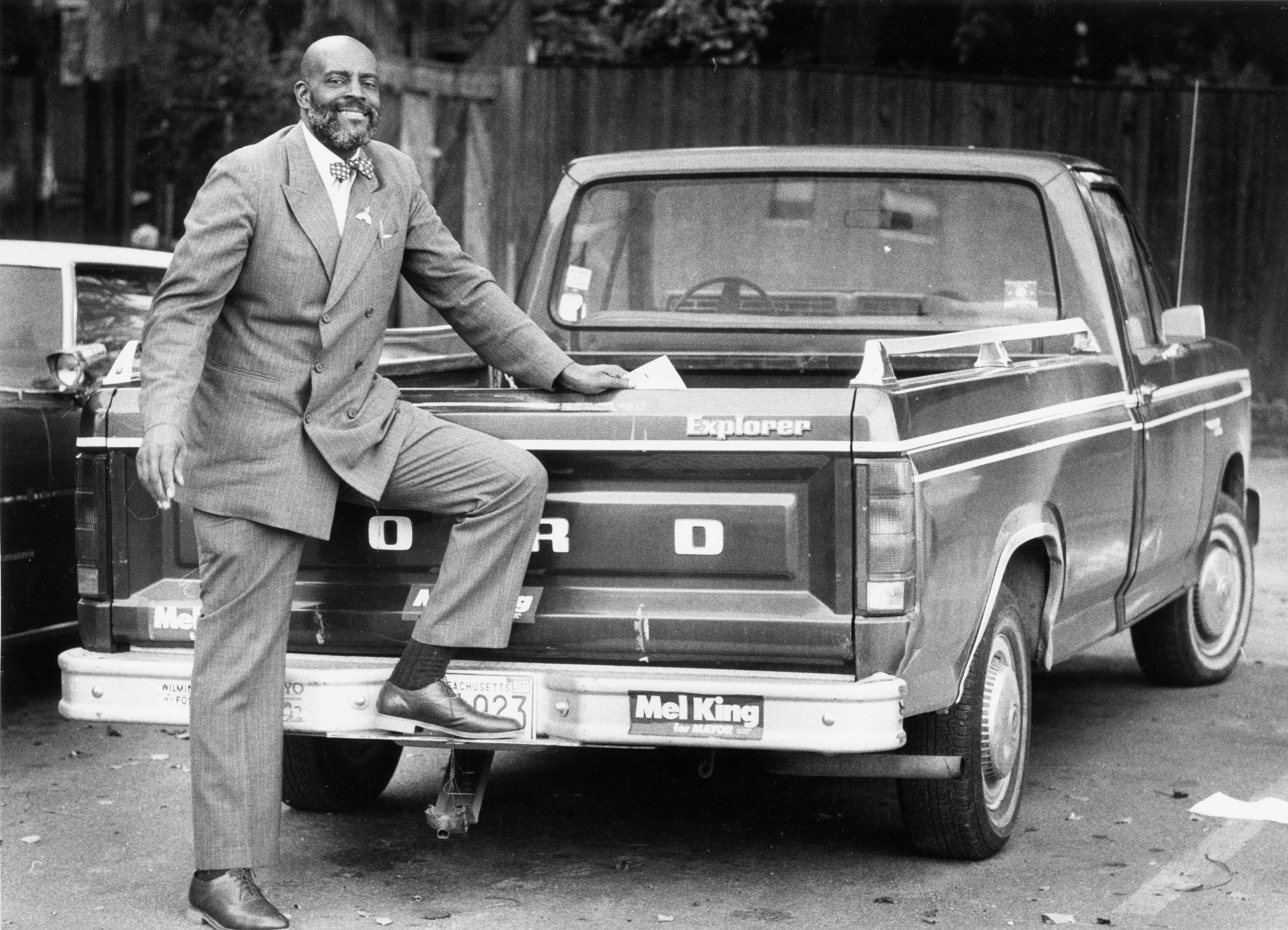
Mel King and his pickup truck in the South End, near King’s campaign headquarters. Boston Globe photo dated October 14, 1983.
The approximately 1.65 million photographs included in the collection were produced by a combination of Globe staff photographers, freelancers, and wire services, such as the Associated Press. They cover the Boston experience — its people, places, and institutions — as well as national and international topics and stories of import.
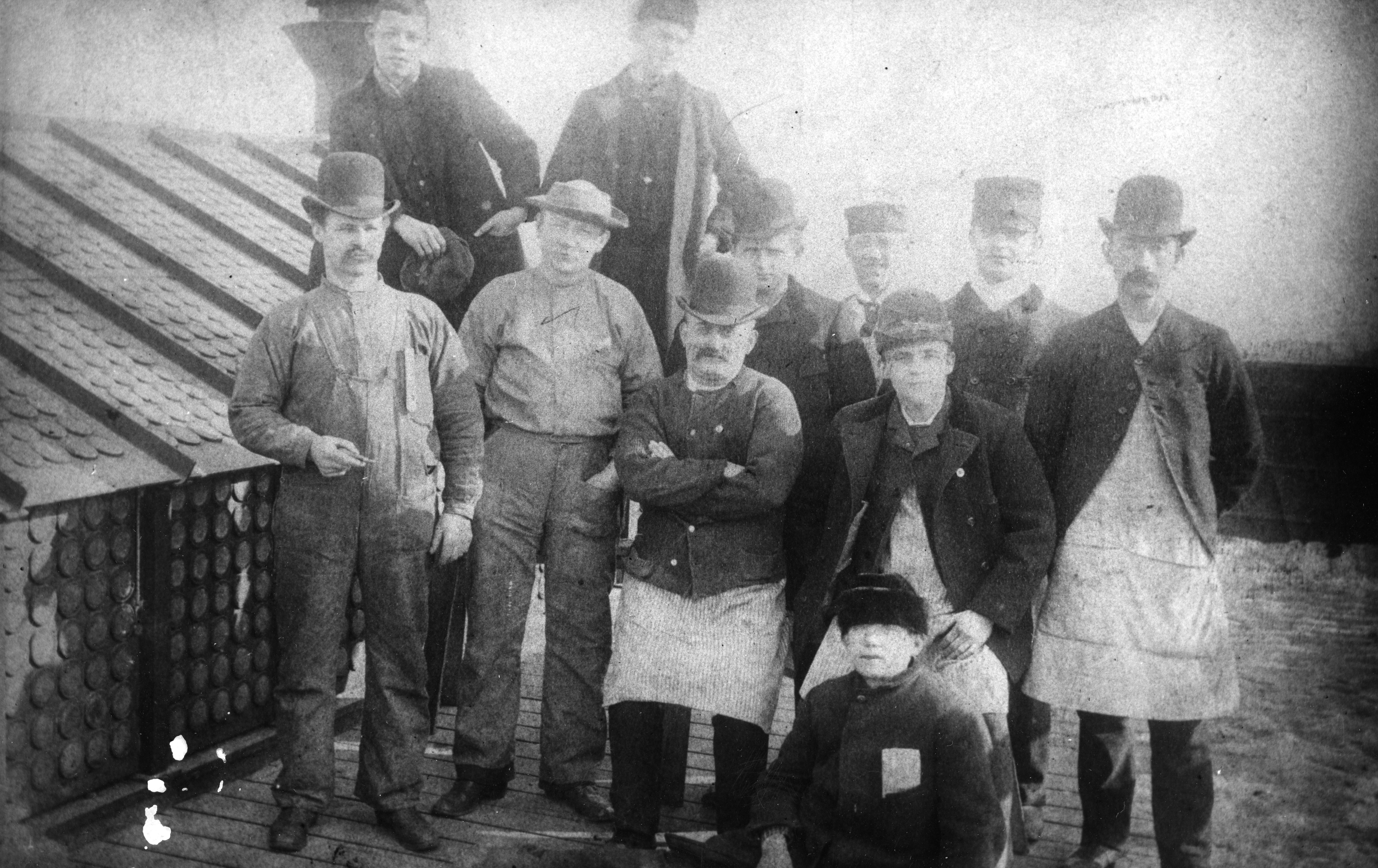
Globe employees on the roof of the Washington Street building, 1890.
The photographs date from the 1920s, although the bulk of the collection begins in the 1950s due to earlier Globe collecting practices and weeding policies, as well as challenges brought on by early photographic processes and storage difficulties. Water damage also impacted the photographs after a 1987 flood.
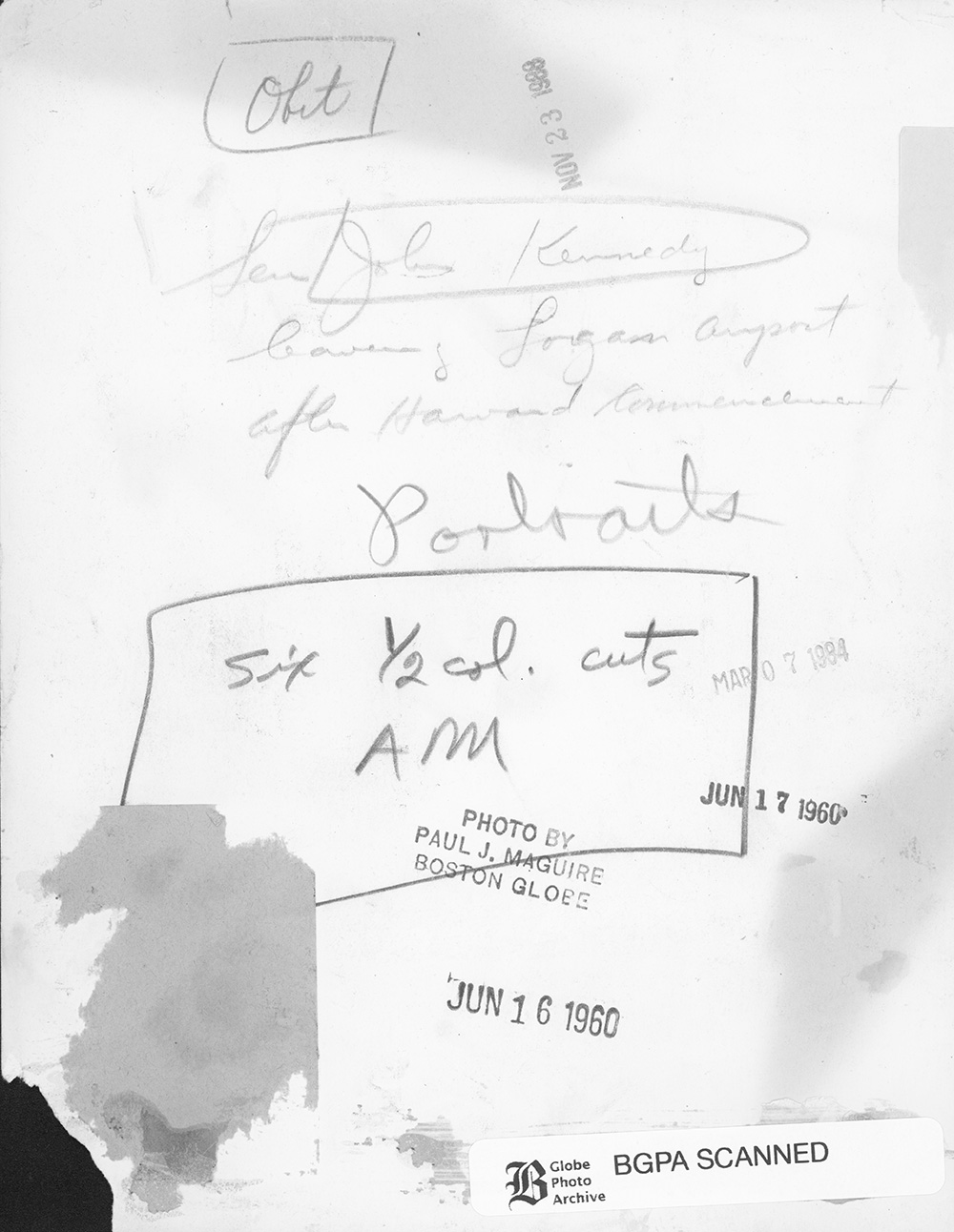
Example of a verso, John F. Kennedy, 1960 with publication stamps, caption
The Globe’s filing system has been maintained. Photographs are arranged in three series — people, subject, and sports — with names and subjects filed in alphabetical order. The back (verso) of each photograph is stamped with information that includes the date of the photograph, the date of each publication (if the photograph was published), photo caption, and photographer or wire service name.

John F. Kennedy, 1960
Individuals included in the people photographs series include a vast range of local, national, and international figures, from local figures such as Frieda Garcia and Melvin H. King to John F. Kennedy, Julia Child, Pope John Paul II, Franklin D. Roosevelt, among many others. The subject photographs are divided into two further subseries – Boston and National – and include a wide range of topics.
The Boston-centered photographs include images relating to the development of the Central Artery and MBTA system, construction ofthe Prudential Center and redevelopment of South Boston, Boston Public Schools desegregation and busing throughout the 1970s and beyond, as well as more mundane topics, from parking lots to garbage, parking enforcement officers at work to local events, festivals, and theatre and musical productions.
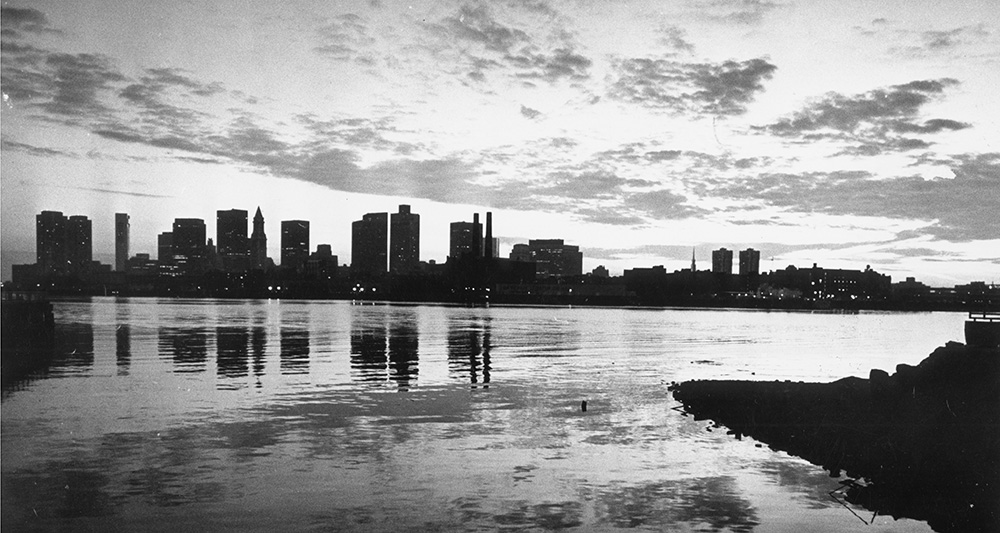
Boston Skyline
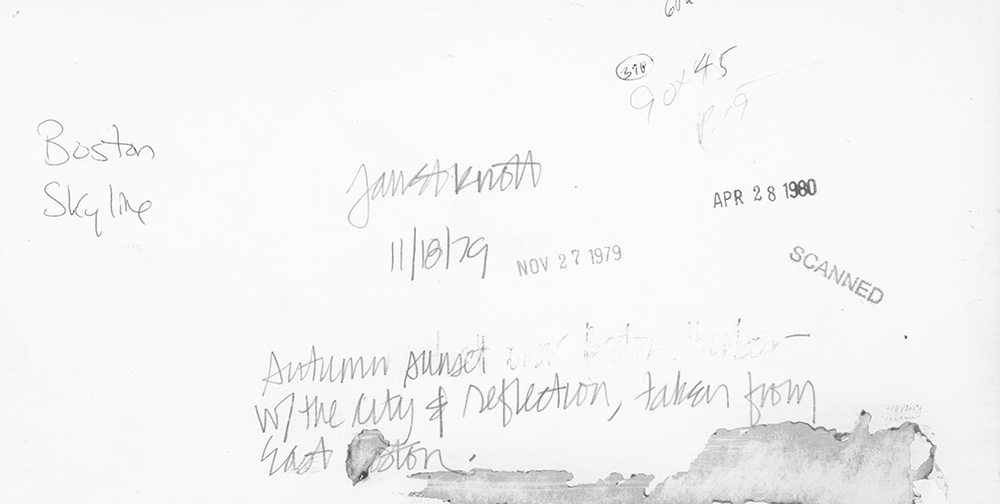
Back (verso) of the Boston skyline
National topics covered by Globe collection photographs include an even broader range of historical moments, mainly throughout the twentieth century. Just a short list of these topics includes images relating to different United States Army, Air Force, and Navy bases, presidential elections, mountain ranges, cities and towns throughout the fifty states, political and cultural history of international countries, as well as more generic subjects, such as bicycling, bridges, and snowstorms, among countless more.
An estimated 5.70 million photographic negatives are in the collection, dating from 1973-2003, with some gaps of time. Approximately 93% of the negatives have never been published. The photographic negatives are filed in chronological order in envelopes that are labeled with the date, photographer name, and assignment. Negatives that were published in the Globe are marked by holes punched in the perforated area of the strip. Each day can potentially have hundreds of negatives, covering all the topics of the day, as well as general images of the Boston metropolitan area.

Hyde Park High School, September 8, 1975, example of negatives
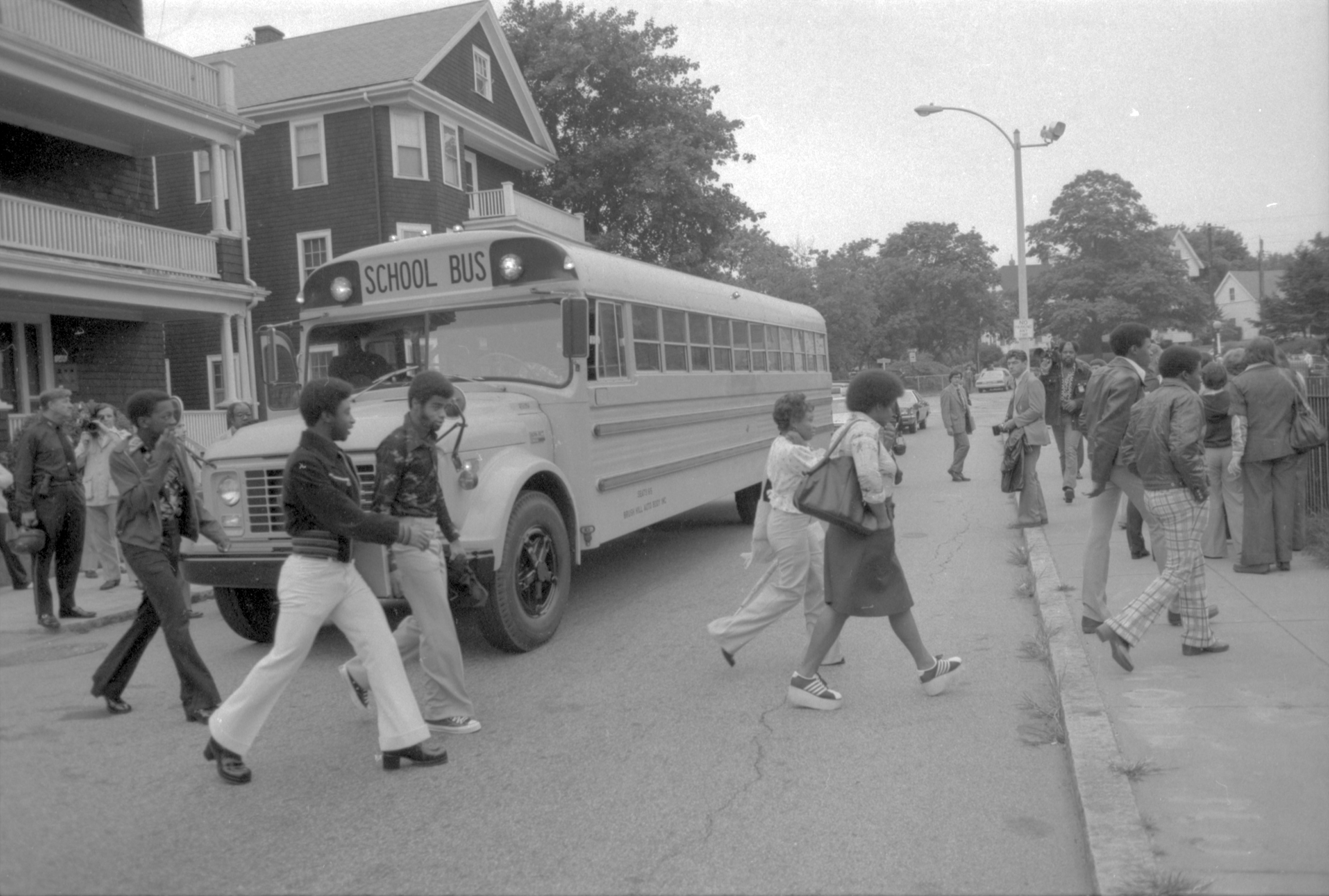
Hyde Park High School, September 8, 1975, example of negatives (second frame)
Most topics were Boston-centric, as well as some national news, as they were taken by Boston Globe staff photographers. For example, subjects of the images from even one day might include a range such as images of Charlestown High and South Boston High; busing to Charlestown, English, Hyde Park, and other high schools; the Fens, Boylston Street, and the Boston Public Gardens; Molotov cocktails seized in Jamaica Plain; fires on Marlboro street; police officers at school and at in front of the South Boston Court; and protests at the Federal Buildings – all negatives from the Globe on September 8, 1975.

Celtics v. New Jersey, January 4, 1983
On January 14, 1983, topics included negatives for images related to a new herpes disease; Bell Telephone Center telephones; a book on bachelorhood; Boston Police removing locks; a camping show at the Bayside Mall; a car for John White; the Celtics playing New Jersey; Centre Plaza lawyers handling school financing; a stabbing in Dorchester; the Old South Church; Woburn feature images; and protests outside the Federal Court building.
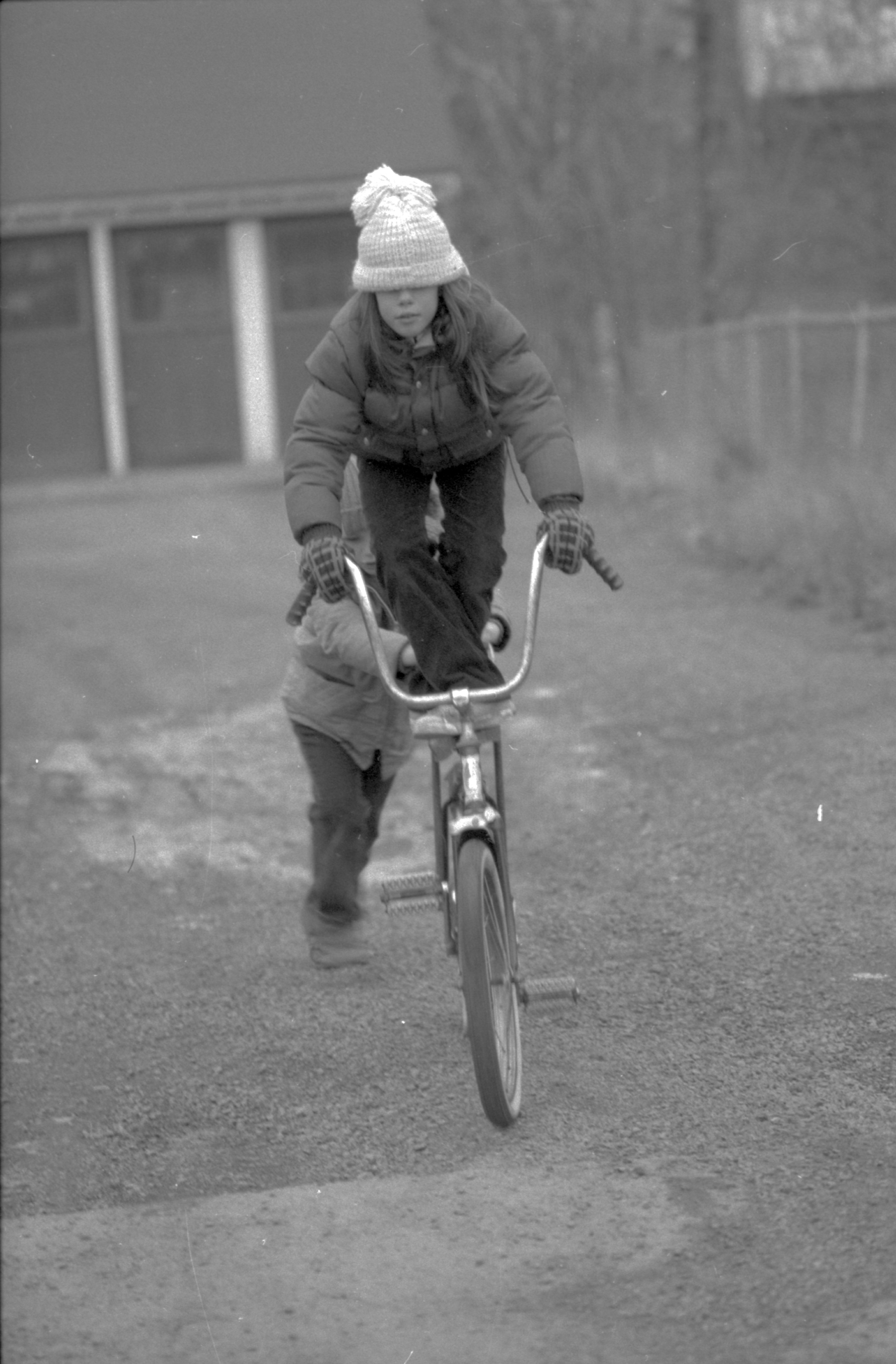
Woburn feature, January 14, 1983
These are just two days out of many years’ worth of topics, but demonstrate the diverse range of subjects and types of images that are included within the photographic negatives.
The newspaper clippings files, which make up some 4,012 linear feet, date from approximately 1900-1977. A collection of reference materials gathered by Globe library staff, the clippings include articles from the Boston Globe, the Boston Herald, the Boston Phoenix, and other local and national publications. Globe article clippings were taken from each day’s third edition, the newspaper of record. In 1977, the Globe developed a searchable full-text newspaper database to store each day’s edition, eliminating the need to manually index and file clippings. The historical clippings were additionally routinely preserved on microfiche.
The newspaper clippings are arranged alphabetically in four subseries: people, byline, and subject, and obituaries. Notes attached to Globe stories indicate if a story ran with a photograph, chart, or other illustration. Published corrections, clarifications, and editor’s notes were also added to stories in the clippings files by Globe librarians. People clippings files include all articles that included a quotation or remarks about an individual. Byline files contain every story written an individual reporter. The subject files, much like the photographs and photographic negatives, contain images on a range of topics, from Boston school, bridges, neighborhoods, and more, to local, regional, and national news. Obituaries that appeared in the Globe, which include local government and political figures, as well as those involved with religious organizations, philanthropic and arts institutions. Obituaries for national figures and individuals who had an impact on the local region are also contained within these files, including many obituaries kept in scrapbooks from 1897 to 1987.
Further materials include large-scale local and area maps as well as nineteenth century Boston Almanacs and City Directories which were used for research by Globe staff. The Boston City Directories have been integrated into the Northeastern University Archives & Special Collections ready reference section.
